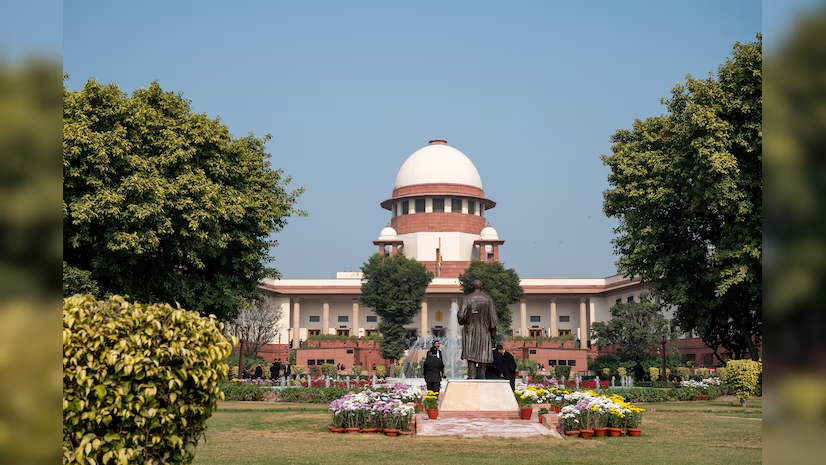- Courses
- GS Full Course 1 Year
- GS Full Course 2 Year
- GS Full Course 3 Year
- GS Full Course Till Selection
- Online Program
- GS Recorded Course
- NCERT (Recorded 500+ Hours)
- Polity Recorded Course
- Geography Recorded Course
- Economy Recorded Course
- AMAC Recorded Course
- Modern India, Post Independence & World History
- Environment Recoded Course
- Governance Recoded Course
- Science & Tech. Recoded Course
- International Relations and Internal Security Recorded Course
- Disaster Management Module Course
- Ethics Recoded Course
- Essay Recoded Course
- Current Affairs Recoded Course
- CSAT
- 5 LAYERED ARJUNA Mentorship
- Public Administration Optional
- ABOUT US
- OUR TOPPERS
- TEST SERIES
- FREE STUDY MATERIAL
- VIDEOS
- CONTACT US
PLACES IN NEWS 8th MARCH 2025
PLACES IN NEWS 8th MARCH 2025
08-03-2025

Bangus Valley
Why in news?
- On March 6, 2025, the Jammu and Kashmir government introduced new regulations for Bangus, a remote tourist spot near the LoC in north Kashmir, aiming to develop it as an ecotourism destination.
About Bangus Valley:
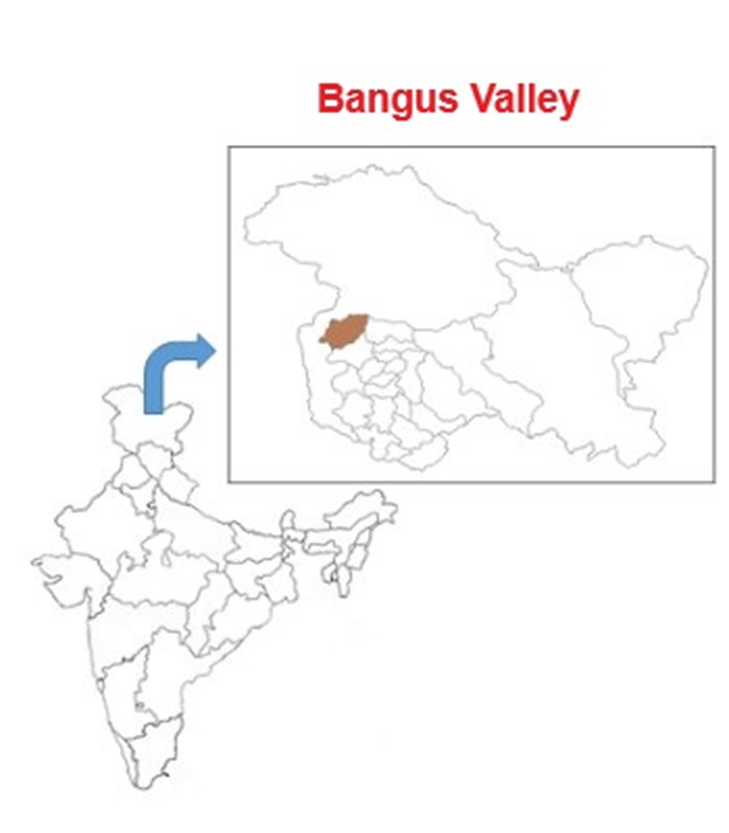
- Location and Terrain
- Situated in the Kupwara district of Jammu and Kashmir, Bangus Valley lies in the northern part of the Handwara sub-district, near the Line of Control (LoC).
- It is positioned at an altitude of approximately 10,000 ft. above sea level, making it one of the highest valleys in the region.
- The valley is flanked by Rajwar and Mawar in the east, Shamasbury and Dajlungun Mountains in the west, and Chowkibal and Karnah Guli in the north.
- Geographical Features
- The valley spans an estimated 300 sq. km and consists of two sections—Bodh Bangus (Big Bangus), a larger elliptical bowl aligned along the east-west axis, and Lokut Bangus (Small Bangus) to its northeast.
- The valley is characterised by lush green meadows, gently sloping landscapes, and a stream flowing through the grasslands, enhancing its picturesque beauty.
- Ecological Significance
- Lying within the Trans-Himalayan region, Bangus exhibits a diverse ecological system, blending grassland and coniferous biomes.
- The surrounding low-lying mountains are covered with dense coniferous forests (Budloo), while the valley itself is home to rich alpine flora and fauna.
- This unique ecosystem makes Bangus an ideal location for ecotourism, offering opportunities for trekking, camping, and wildlife exploration.
Biligiri Rangaswamy Temple (BRT) Tiger Reserve
Why in news?
- A recent Eco-Sensitive Zone (ESZ) monitoring committee meeting ruled out new commercial construction within 1 km of the Biligiri Rangaswamy Temple (BRT) Tiger Reserve boundary or up to the ESZ limit.
About Biligiri Rangaswamy Temple (BRT) Tiger Reserve:

- Location and Geography:
- The Biligiri Rangaswamy Temple (BRT) Tiger Reserve is situated in Chamarajanagar district, Karnataka, and lies at the confluence of the Western and Eastern Ghats in South India.
- The reserve spans 574.82 sq. km and was designated a Tiger Reserve in 2011.
- Its name, Biligiri, meaning "white rocky cliff," comes from the prominent white rock face that houses the ancient Rangaswamy Temple.
- The region is often shrouded in mist and silvery clouds, adding to its scenic beauty.
- Flora and Fauna:
- The reserve exhibits diverse vegetation, influenced by varying climatic conditions and elevations.
- It includes scrublands, deciduous forests, riparian zones, evergreen patches, sholas, and grasslands.
- The dominant tree species found here include Axlewood, Rosewood, Dhawda, Indian Laurel, Black Myrobalan, and Kindal.
- The rich fauna of the reserve includes tigers, elephants, leopards, wild dogs, bison, sambar deer, spotted deer, barking deer, four-horned antelope, sloth bears, wild boars, common langurs, and bonnet macaques.
- Additionally, the reserve is home to various reptile and bird species, enhancing its ecological significance.
- Cultural Significance:
- At the heart of the reserve stands the Rangaswamy Temple, dedicated to Lord Vishnu, making it a revered pilgrimage site.
- The region is also home to the Soliga tribe, an indigenous community that has coexisted with the forest and its wildlife for generations.
- Their deep connection with nature and traditional conservation practices contribute to the sustainable management of the reserve.
Panchaganga River
Why in news?
- The Maharashtra government recently formed a panel to investigate the causes of pollution in the Panchaganga River.
About Panchaganga River:
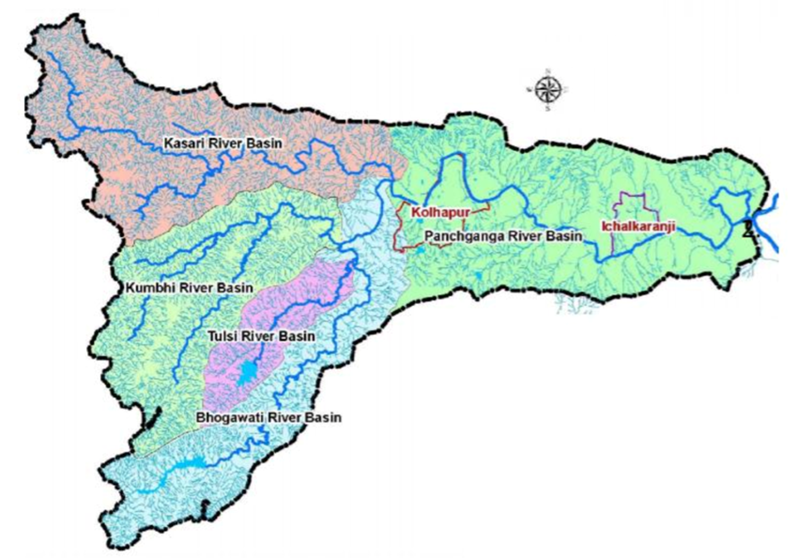
- Origin and Course
- The Panchaganga River, a major tributary of the Krishna River, originates from Prayag Sangam in the Sahyadri mountain ranges.
- The river's birthplace is Chikhlee Taluka, a small village in Kolhapur district, Maharashtra.
- It flows for approximately 80 km before merging with the Krishna River.
- The Panchaganga River Valley is known for its fertile lands, supporting agriculture, particularly sugarcane cultivation.
- The river derives its name from the confluence of five rivers—Kasari, Kumbhi, Tulsi, Bhogawati, and Saraswati.
- These tributaries play a crucial role in sustaining the region's agriculture and water supply.
- Rising Pollution Concerns:
- In recent years, pollution in the Panchaganga River has risen significantly, mainly due to the discharge of untreated municipal sewage from Kolhapur town.
- This contamination poses serious threats to aquatic life, public health, and agricultural activities.
- Despite its spiritual significance, with several temples and shrines along its banks, the increasing pollution has raised environmental concerns.
- Addressing this issue requires effective wastewater management and pollution control measures to restore the river's ecological balance.
Kanwar Lake
Why in news?
- Experts warn that Bihar's delay in approving the Kanwar Lake restoration plan threatens the region's bird population, as the lake is a crucial wetland habitat for migratory and resident birds.
About Kanwar Lake:
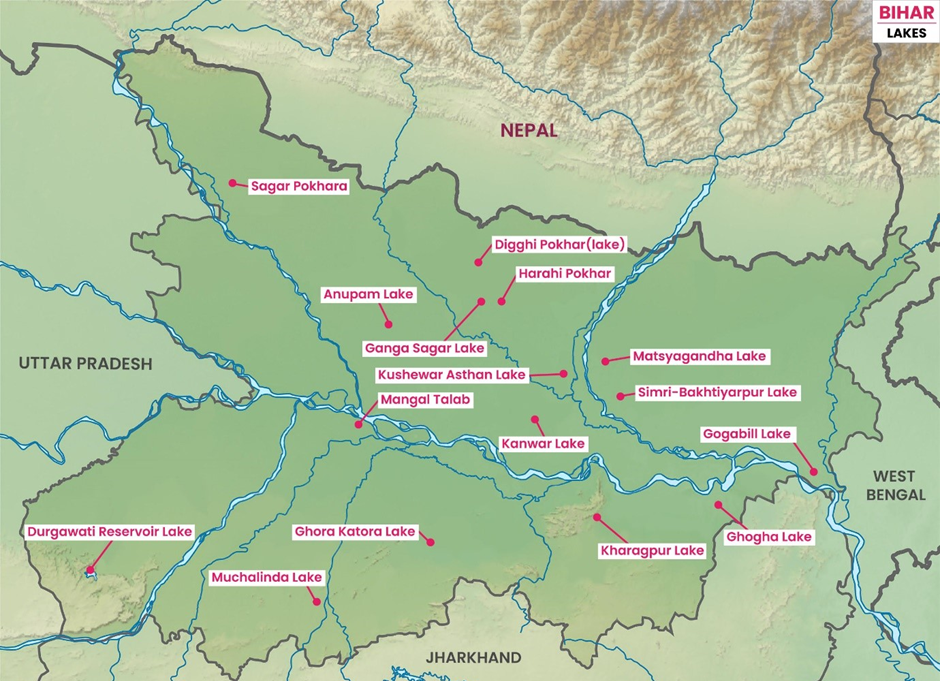
- Location and Formation:
- Kanwar Lake, located in Begusarai district, Bihar, is Asia’s largest freshwater oxbow lake and Bihar’s only Ramsar site.
- It was formed due to the meandering course of the Burhi Gandak River, which led to the creation of a crescent-shaped water body as sediment deposition cut off the river bend.
- Oxbow lakes like Kanwar are typically found in floodplains and low-lying areas, playing a crucial role in groundwater recharge and ecosystem balance.
- Ecological Significance
- Once a thriving wetland, Kanwar Lake served as a haven for migratory birds, attracting species from Central Asia, Siberia, and Europe.
- It provided an ideal habitat for birds like the Siberian crane, bar-headed goose, and greater adjutant stork, supporting rich biodiversity.
- The wetland also acted as a natural flood control system, absorbing excess water during monsoons.
- Threats and Conservation Concerns
- Despite its ecological importance, Kanwar Lake is rapidly shrinking due to encroachments, land expansion, and embankment construction along the Burhi Gandak River, blocking its main water source.
- Without urgent restoration efforts, the lake faces irreversible degradation. Conservation initiatives could revive its lost glory, making it a tourism hub and generating employment opportunities for locals.
Rajmahal Hills
Why in news?
- A rare and well-preserved petrified fossil has been discovered in Pakur, Jharkhand, a region associated with the Rajmahal Hills, known for their rich Jurassic-era fossils.
About Rajmahal Hills:
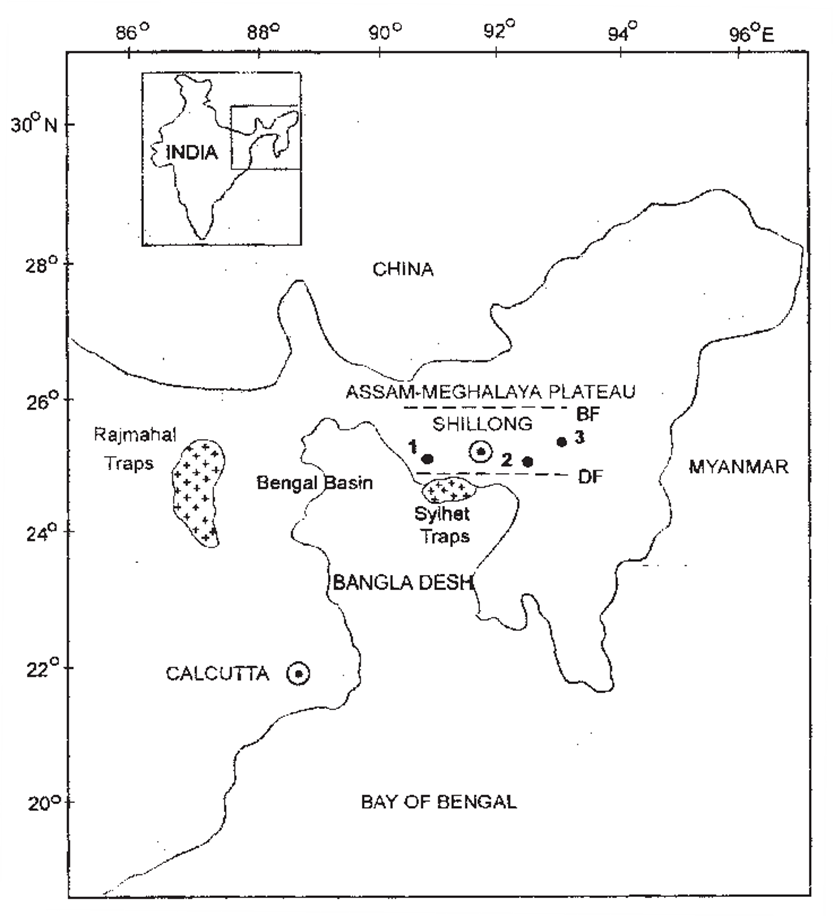
- Location:
- The Rajmahal Hills are located in the Santhal Pargana division of Jharkhand, spanning across Sahibganj, Dumka, and Pakur districts.
- Covering an area of approximately 2,600 km², these hills are inhabited by indigenous communities like the Sauria Paharia and Santhal tribes.
- The River Ganges meanders around these hills, altering its course from east to south.
- Formation and Geological Background
- The Rajmahal Hills were formed due to volcanic activity during the Jurassic period, leading to the development of the Rajmahal Traps, which consist of 16 to 18 lava flows.
- Between these layers, periods of vegetation growth resulted in the formation of fossilised plant remains, providing valuable insights into prehistoric ecosystems.
- Potential Resources and Economic Significance
- The region is rich in basalt, which is extensively mined for construction materials.
- However, the extraction of minerals and expansion of mining activities pose a threat to the unique geological and fossil heritage of the area.
- The hills also hold scientific importance due to their potential for further fossil discoveries, which could even include dinosaur fossils.
- Recent Fossil Discovery and Its Significance
- A rare and well-preserved petrified fossil was recently unearthed near Barmasia village in Pakur district by a team of geologists and forest officials.
- Estimated to be around 100-145 million years old, this 20-ft-long fossilised tree, dating back to the Cretaceous period, is the first in-situ discovery of its kind in India.
- This finding strengthens the paleontological significance of the Rajmahal Hills and can provide deeper insights into prehistoric climate conditions and the impact of volcanic eruptions.
- The Rajmahal Formation’s fossil-bearing beds have been declared National Geological Monuments of India by the Geological Survey of India (GSI).
- However, concerns over mining activities threaten these valuable fossil sites, highlighting the need for conservation and scientific research to preserve this unique natural heritage.
|
UPSC CSE PYQs Q1. Consider the following statements:
How many of the Statements given above are correct?
Answer: Option A |
|
Also Read |
|
| Public Administration Optional | |
| UPSC Monthly Magazine | Question Answer Practice For UPSC |



